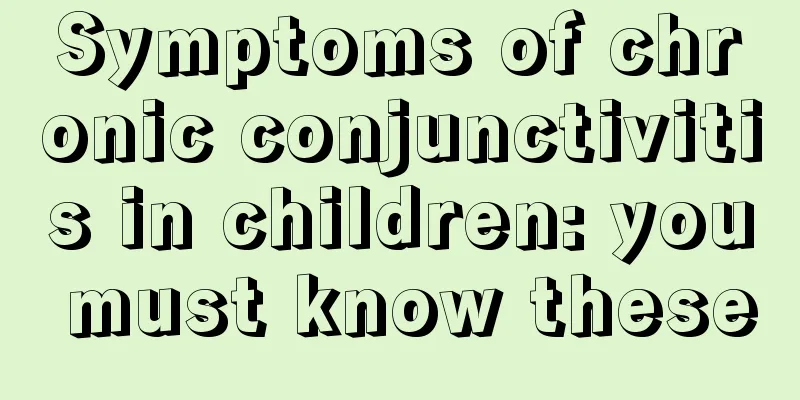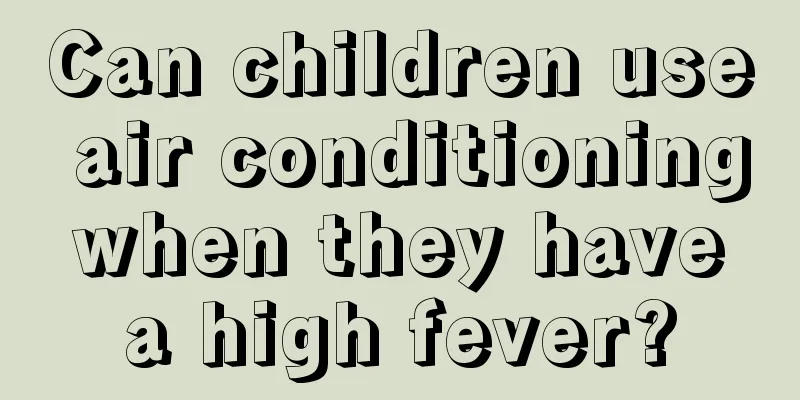Symptoms of chronic conjunctivitis in children: you must know these

|
Parents should pay more attention to their children. If they find any abnormal behavior in their children, they should pay attention. Because children do not know how to protect their eyes, they are often more prone to conjunctivitis. At this time, some corresponding symptoms will appear. Parents should understand and be vigilant. 1. Increased secretions According to the characteristics of conjunctival secretions, they can be divided into: watery secretions, viscous secretions, purulent secretions and mucopurulent secretions. The secretions mainly come from the lacrimal glands, accessory lacrimal glands, goblet cells, and are mixed with exudative inflammatory cells, pathogenic microorganisms, and necrotic tissue. Generally speaking, watery secretions are more common in viral and drug-toxic conjunctivitis; sticky secretions are more common in allergic conjunctivitis, spring catarrhal conjunctivitis, or conjunctivitis accompanied by tear secretion disorders; purulent secretions are often characteristic manifestations of acute bacterial conjunctivitis; mucopurulent secretions are more common in trachoma or bacterial conjunctivitis. 2. Subconjunctival hemorrhage The rupture of small blood vessels under the conjunctiva causes blood to enter the subconjunctival tissue space and become subconjunctival hemorrhage, which may appear in the form of dots or sheets and is generally bright red. When the amount of bleeding is large, it may be dark red. The local conjunctiva may bulge, and bleeding from small blood vessels close to the corneal margin may form a localized subconjunctival hematoma. Subconjunctival hemorrhage is common in epidemic hemorrhagic conjunctivitis, Koch-Weeks bacillary conjunctivitis and severe adenoviral conjunctivitis. 3. Conjunctival congestion It manifests as dilation of the surface blood vessels of the conjunctiva, which can be diffuse congestion or local congestion. The color of the congestion is mostly bright red, and the congestion is more obvious towards the dome area and is reduced towards the corneal edge. When there is no obvious edema, the conjunctival blood vessels can be moved by pushing them, and there is no tenderness. After 0.1% epinephrine was dripped on the conjunctival surface, the conjunctival vascular congestion disappeared significantly. When conjunctival inflammation affects the cornea, sclera or fascia tissue at the same time, conjunctival congestion and ciliary congestion may also coexist, which is clinically called mixed congestion. |
<<: Pay attention to the treatment of otomastoiditis in children
>>: How much plasma protein is in a child
Recommend
Why is the child crying and not sleeping?
Children are very important to every family. Ever...
What to do if your baby has a viral rash
Rashes are the most common disease for babies. Mo...
What should children eat to grow taller during their growth period?
In daily life, I believe that many mothers, in ad...
What are the symptoms of hand, foot and mouth disease encephalitis?
Hand, foot and mouth disease is a common infectio...
How to correct children’s stuttering?
Children are born with the ability to learn durin...
What should we do if children have weak spleen and stomach?
When children are young, they may not like to eat...
What should I do if my child has a high fever and convulsions?
Babies are fragile angels, and mothers are afraid...
How to give medicine to your baby?
When our body suffers from a certain disease, the...
What should I do if my child keeps touching my penis?
The genitals are tissues that grow from birth. Ch...
What are the dangers of tonsillectomy?
Tonsils are an organ that is very helpful for us ...
1 month old baby sleep time
Everyone knows that the younger the baby is, the ...
How to prevent gastroesophageal reflux in premature infants
What is the phenomenon of gastroesophageal reflux...
Ten-month-old baby often has diarrhea
Every change in the baby after birth is watched b...
What to do if the baby's umbilical cord becomes suppurative
When a baby comes into this world, it brings some...
How to prevent animal bites in young children
Because young children are young, they do not kno...









